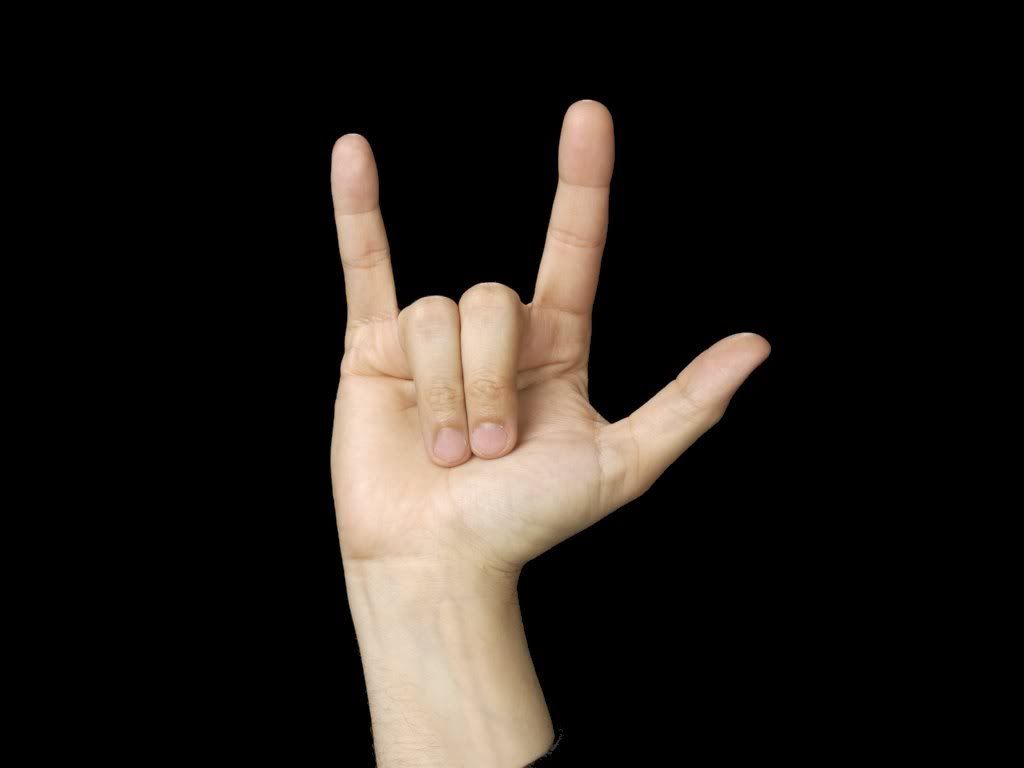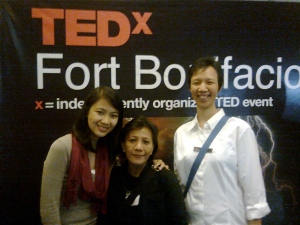Monday, December 20, 2010
Wednesday, April 28, 2010
Into the World of the Deaf
By: Ms. Isabel L. Templo
"At last night’s TEDx Fort Bonifacio, I was once again transported into the world of the deaf. The first speaker of the night, Ana Arce — who graduated magna cum laude from the De La Salle-College of Saint Benilde — is Deaf. Deaf, with a capital “D,” she explained through an interpreter — not deaf, deaf-mute, hearing impaired, and certainly not dumb!
Ana’s talk was inspiring. “The Deaf can,” she told the audience. The Deaf, she pointed out, are businessmen and women, sports enthusiasts, artists and photographers — and yes, educators. This, despite the fact that they live and move in a society that is so hearing-centric. Think about it. How have we made life easier for the Deaf? Aside from the TV show “Kapwa Ko, Mahal Ko,” how many TV shows have had sign language interpreters or even closed captioning? How many theater productions and live events? And how many cinemas show films with subtitles for the Deaf?
Ana closed her talk with a challenge to the hearing: “Let us into your world.” It is time to make our society more Deaf-friendly. We can at least try.
+++
Interpreting for Ana and for some of the other speakers was Veronica (“Nicky”) Perez, the dean of the De La Salle-College of Saint Benilde School of Deaf Education and Applied Studies (SDEAS), who happens to be my cousin.
Watching her sign during TEDx, I realized how hard it is to be a sign language interpreter. It’s more than just literally signing what a speaker says. “You have to sign for the Deaf to understand,” Nicky said — which means there can be a lot of explaining and contextualizing going on.
The Deaf community needs more hearing people to learn sign language — and eventually interpret for them. For those who want to learn the language, SDEAS would be a good place to start.
+++
There’s also the concern about what kind of sign language to use when communicating with the Deaf. The signs used by Linda on Sesame Street are from American Sign Language (ASL). SDEAS is pushing for Filipino Sign Language (FSL).
Many of the signs are universal, but there is one simple difference. “FSL is based on the experiences of Filipinos,” Nicky explained. To make the ASL sign for “dog,” for example, one would slap one’s leg and then snap her fingers. But this is an American’s experience — friendly, well-trained dogs. In the Philippine setting, with dogs roaming the streets freely and barking at people, a more appropriate sign is made by using the hands to mimic the action of a dog’s jaws as it barks.
It’s an interesting language — and like other languages, a living language that continues to remain relevant to those who use it.

The sign for "I love you"
+++
I also blogged about TEDx Fort Bonifacio here."
Please read the rest of Ms. Isabel Templo's post in her Cybernotebookhttp://cybernotebook.wordpress.com/2010/02/18/into-the-world-of-the-deaf/
She is currently Freelance Writer and Editor (Self-employed), and a partner at East Axis Creative, Inc. (http://www.east-axis.com/home.html)
Thank you ma'am for allowing us to post your enlightening thoughts.
Thursday, March 11, 2010
Creation of bureau for special kids urged
Creation of bureau for special kids urged
By Philip Tubeza
Philippine Daily Inquirer
First Posted 07:06:00 03/12/2010
Filed Under: Children, Education, Disabled, Legislation, Government offices & agencies
MANILA, Philippines—With only two percent of Filipino children with special needs getting government support, the Department of Education (DepEd) is pushing for the creation of a Bureau of Special Education (BSE) to attend to their needs, outgoing Education Secretary Jesli Lapus said Thursday.
Lapus said the proposed bureau would help not just children with special needs (CSN) but young persons with disabilities (PWD), pointing out that in other countries they received “100-percent state support.”
“We believe the creation of a specific unit to take care of the unique needs of special children is urgent,” said Lapus in a statement.
He said that while CSNs and PWDs comprised a minority, they remained a significant part of the children’s population.
Gifted children
Based on school year 2004-2005 estimates, there were 5.49 million CSNs in the Philippines, or 13 percent of the children’s population. Of the number, an estimated 4.2 million were PWDs while 1.27 million “were gifted children,” Lapus said.
Only around 15,000 of these children were enrolled in school year 2004-2005, however. But the number represented an 88-percent increase since school year 1995-1996 when enrollment was only around 8,000, he said.
To improve the situation, Lapus said he supported Senate Bill No. 2020, which mandates the creation of at least one special education (Sped) center in each school division (one for each of the 17 regions) and up to three centers in the big school divisions.
He asked Malacañang to certify the bill as urgent.
The Senate bill has been approved on second reading, while its counterpart in the House of Representatives has been approved on third reading.
“Most people have not yet recognized that certain CSNs or PWDs have very distinct talents and skills. And their integration and mainstreaming into society will contribute significantly to national development,” Lapus said.
Defining special kids
Children with special needs are those who have autism, have other mental problems, are visually or hearing-impaired, are orthopedically or physically handicapped, learning-disabled, speech-defective, have behavior problems, and those children that encounter health problems under the formal educational system.
“All CSNs, irrespective of the degree of sensory, physical or intellectual disability or needs, will have the opportunity to be educated in the most educationally enhancing environment consistent with the provision of a quality education that best meets their needs,” the Senate bill reads.
Under the proposed law, special day care centers will be put up near existing Sped centers with the support of the Department of Social Welfare and Development.
The bill provides for special instructional materials which may be transcribed into Braille, large-type print or audio tape without having to pay penalties or royalties.
The bill also allows private institutions participating in the programs to avail of tax breaks and loans, technological and scientific assistance.
It provides for a P600-million yearly budget for five years for the Sped program, while a separate P20 million yearly from the President’s Social Fund and the Philippine Gaming Corp. will finance the creation and operation of the BSE.

